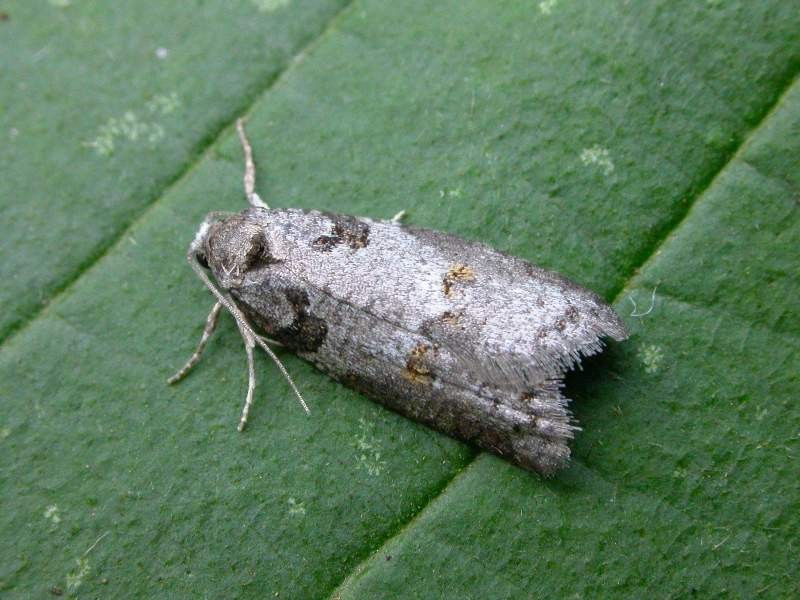Cnephasia conspersana
(Cnephasia conspersana)

Description
Cnephasia conspersana is a species of moth of the family Tortricidae. It is found in Ireland, Great Britain, France, Italy, Portugal, Spain and North Africa. The habitat consists of coastal chalk downlands and heathlands. For a key to the terms used, see Glossary of entomology terms. The wingspan is 15–22 mm. The antennal cilia of the male are short. The thorax is crested. The elogate forewings elongate have slightly arched costa, from vein 7 to apex. The ground colour is grey, irrorated or mixed with white, more strongly in the female. There is and angulated fascia at 1/3, slender and often indistinct dorsally. An irregular central fascia is sometimes interrupted near dorsum. The costal and terminal patches (seldom connected) are grey or fuscous, often blackish-marked, sometimes nearly obsolete. The hindwings are light fuscous or grey, in female darker, 6 and 7 short-stalked. The larva is pale greenish-grey ; spots small, black; head and plate of 2 yellowish-brown: Julius von Kennel provides a full description. Adults have been recorded on wing in July. There is generally one generation per year, although two have been reported from Ireland. The larvae feed on the flowers of Dryas octopetala, Chrysanthemum, Taraxacum, Teucrium, Hieracium, Hypochoeris, Leontodon and Helianthemum species. They spin the petals of the flowers together, and feed from within. Cnephasia is a genus of tortrix moths (family Tortricidae). It belongs to the subfamily Tortricinae and therein to the tribe Cnephasiini, of which it is the type genus. The type species around which Cnephasia was established by J. Curtis in 1826 (in the explanations to plate 100 of his British Entomology) was claimed to be "Tortrix logiana". However, this was a misidentification; the name of T. logiana (described by C.A. Clerck in 1759 and nowadays called Acleris logiana) was until the early 20th century frequently applied to related species in error. Curtis simply repeated the mistake of A.H. Haworth, who had in his 1811 volume of Lepidoptera Britannica discussed a Cnephasia under Clerck's name, but the original misidentification may well go back to Linnaeus' treatment of "T. logiana" in Systema naturae. Eventually, this was resolved, and the type species of Cnephasia was determined to be the tortrix moth described as Olethreutes pasiuana by J. Hübner in 1822.
Taxonomic tree:







